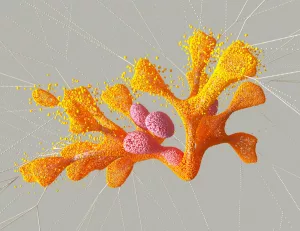Netflix’s ability to suggest just the right show or movie almost feels like magic, doesn’t it? But behind the curtain, it’s a well-oiled machine powered by sophisticated algorithms and a treasure trove of data. Let’s take a deeper dive into how Netflix makes these spot-on recommendations, exploring the nitty-gritty details and technologies involved in crafting your personalized viewing experience.
Understanding User Engagement
To kick things off, Netflix begins by gathering extensive data on user interactions. This isn’t just about what you’re watching; it’s about how you’re watching it. Here’s a closer look at the types of data Netflix collects:
- Search Queries: Every time you search for a title, Netflix notes what you’re looking for. This helps the algorithm understand your current interests.
- Movie and Show Ratings: Although Netflix has moved away from explicit star ratings to a simpler thumbs-up/thumbs-down system, these ratings still provide valuable insight into what you like or dislike.
- Playback History: Your viewing history is a goldmine for Netflix. It’s not just about what you’ve watched, but how you’ve interacted with it. Did you binge-watch a series or stop after one episode?
- Pause and Resume Points: How you watch matters too. Frequent pausing might indicate a complex or dense show that requires more attention, while seamless viewing could mean you’re deeply engaged.
- Browsing History: Even if you don’t watch something, your browsing behavior—like adding to your list or clicking on a title—signals interest.
- User Profiles: With multiple family members sharing an account, individual profiles ensure that recommendations are tailored to each user’s tastes.
Enhancing User Profiles
One of the smartest moves Netflix made was allowing multiple profiles per account. Imagine a family of four, each with distinct tastes. The dad might prefer action movies, the mom might be a fan of historical dramas, and the kids could be into animated shows. By enabling separate profiles, Netflix ensures that each person receives tailored recommendations. This separation is crucial for maintaining accurate data, as it prevents the algorithm from mixing up preferences and making less relevant suggestions.
Delving Deeper into Collaborative Filtering
Collaborative filtering is like the algorithm’s attempt at matchmaking—not between people, but between you and the content you might love. This method involves studying patterns in user behavior. For instance, if you and several other users have watched the same romantic comedies or thrillers, it might suggest a new release in that genre that those users have enjoyed.
Real-Life Example
Imagine you’ve just finished watching “Stranger Things.” Collaborative filtering looks at other users who also watched “Stranger Things” and checks what else they’ve enjoyed. If a majority of them watched “The Witcher” next, you might see that pop up in your recommendations soon.
The Power of User Clusters
In collaborative filtering, Netflix doesn’t just look at individual user behavior. It identifies clusters of users with similar tastes. You could be part of a group that loves science fiction with strong female leads. As Netflix studies these clusters, it can suggest shows that resonate with your specific subgroup, making recommendations feel even more personal.
The Role of Content-Based Filtering
While collaborative filtering focuses on user behavior, content-based filtering zeroes in on the content itself. It’s like having a personal shopper who knows your style. This method examines the attributes of shows and movies—such as genre, director, cast, and even screenplay similarities.
Attributes in Action
Say you’re a fan of Christopher Nolan films. Content-based filtering will recognize your preference for his directorial style and suggest other movies with similar storytelling techniques or visual styles, even if Nolan wasn’t involved.
Using Metadata for Precision
Netflix employs a detailed tagging system that goes beyond basic categories. Each piece of content is tagged with numerous attributes, such as mood (e.g., “dark,” “uplifting”), storyline (e.g., “coming of age,” “redemption”), and more. This helps Netflix refine its recommendations, ensuring precision in what it suggests, even for niche preferences.
Matrix Factorization: The Mathematical Backbone
Matrix factorization might sound like something out of a math class, but it’s crucial for Netflix’s recommendations. This technique involves creating a matrix that represents user preferences for various items, then breaking it down to discover latent factors.
How It Works
Think of it as a gigantic spreadsheet where each row is a user, each column is a movie, and each cell represents the interaction between the two. By factorizing this matrix, Netflix can predict the missing entries—essentially guessing what you might like based on the data it has.
Embeddings for Enhanced Understanding
Netflix doesn’t just stop at matrix factorization. It employs embeddings, a method to represent users and items in a shared space. This allows Netflix to understand the nuances of user preferences and item characteristics better, leading to more accurate predictions of what you might enjoy next.
Deep Learning and Neural Networks: The Future of Recommendations
As part of their ongoing innovation, Netflix employs deep learning and neural networks to enhance their algorithms. These technologies allow Netflix to analyze complex patterns and adapt to changes in viewing habits more swiftly.
The Power of Neural Networks
Neural networks function somewhat like the human brain, processing data through interconnected nodes. This allows Netflix to not only understand explicit user preferences but also infer subtle tastes you might not even be aware of.
Real-Time Adaptation
One significant advantage of neural networks is their ability to process information in real-time. If you suddenly take an interest in a new genre, Netflix’s neural networks can adjust quickly, keeping your recommendations relevant and timely.
The Importance of Contextual Recommendations
Netflix doesn’t just consider what you like; it also takes context into account. This means understanding the time of day you typically watch certain genres or the devices you use, which helps in tailoring suggestions even further.
Example of Contextual Recommendations
If you usually watch light-hearted comedies on your phone during your lunch break, Netflix might prioritize showing you similar content during those hours. Conversely, if you tend to watch thrillers or dramas on your TV in the evening, those might be the first suggestions you see after work.
Device-Based Personalization
Netflix recognizes that the type of device you use can influence your viewing preferences. For instance, you might prefer short, easy-to-digest content on your mobile device, while reserving feature films for your TV. By taking the device into account, Netflix ensures that its recommendations are not only based on your content preferences but also on how you prefer to consume media.
Avoiding Common Pitfalls: The Cold Start Problem
One challenge Netflix faces is the “cold start problem,” which refers to the difficulty of recommending content to new users with little to no viewing history. To combat this, Netflix relies on initial user inputs, like selecting preferred genres or shows, to jumpstart the recommendation process.
Warmth in Cold Starts
Netflix might offer a selection of popular titles or critically acclaimed series to new users, providing a safe starting point. Additionally, leveraging data from similar new users who have shared preferences can help bridge the gap swiftly, making the transition to personalized recommendations smoother.
Continuous Learning and Adaptation
The beauty of Netflix’s recommendation engine is its ability to learn and adapt. Recommendations aren’t static; they evolve as your habits change. If you suddenly develop an interest in documentaries, Netflix will pivot to include more of those in your feed.
Feedback Loop
Every interaction you have with Netflix feeds back into the system, refining its recommendations. This feedback loop ensures that the more you use Netflix, the better it gets at understanding your preferences.
Dynamic Personalization
Netflix’s system is designed to learn continually from your latest interactions. This ensures that if your tastes evolve, your recommendations do too. It’s like having a personal assistant who knows your current interests and adapts to your changing moods and preferences.
Real-World Impact and User Experience
The success of Netflix’s recommendation system can be seen in user engagement and retention rates. By delivering content that’s tailored to individual preferences, Netflix keeps viewers glued to their screens, reducing churn and increasing satisfaction.
Case Study
Consider the impact of Netflix’s recommendations on the success of original content. Shows like “The Queen’s Gambit” became overnight sensations, in part because they were strategically placed in front of the right audiences based on viewing habits and preferences.
The Power of Original Content
Netflix’s ability to push original content effectively showcases the strength of its recommendation engine. By analyzing user data, Netflix can identify potential hits and market them to the right demographic, ensuring high engagement levels and maximizing viewership.
Future Directions: What’s Next for Netflix’s Recommendation System?
As technology evolves, so too does Netflix’s approach to recommendations. We can expect further integration of artificial intelligence to enhance personalization, possibly incorporating elements of virtual or augmented reality to offer an even more immersive experience.
AI and Machine Learning Innovations
Netflix continually invests in AI and machine learning to stay ahead of the curve. These technologies enable more nuanced understanding of user preferences, leading to hyper-personalized recommendations that can anticipate what you’ll enjoy even before you know it yourself.
The Potential of Augmented Reality
While still in its nascent stages, augmented reality (AR) offers exciting possibilities for enhancing viewer engagement. Imagine browsing for shows in a virtual Netflix living room, where recommendations are visually displayed around you. This could transform how users discover and interact with content, making the experience even more immersive.
Practical Tips for Users
While Netflix does most of the heavy lifting, there are a few things you can do to improve your recommendations:
- Rate Content: Don’t forget to use the thumbs-up or thumbs-down feature. It’s a quick way to help Netflix understand your tastes.
- Curate Your List: Regularly update your “My List” to reflect your current interests. This helps Netflix prioritize showing you relevant content.
- Explore Different Profiles: If you share an account, make sure each user has their own profile to ensure personalized recommendations.
- Engage with New Content: Try watching different genres or new releases. This can broaden your recommendations and introduce you to hidden gems.
- Provide Feedback: If a recommendation feels off, take a moment to give feedback. This helps Netflix refine its algorithm for better accuracy.
- Experiment with Settings: Dive into account settings and explore features like autoplay controls or subtitle preferences, which can subtly influence your viewing experience.
By engaging with these features, you help Netflix refine its suggestions, ensuring you always have something great to watch. So next time you sit down to stream, know that there’s a whole world of tech working behind the scenes to make your viewing experience seamless and enjoyable.




